Handwriting is a skill anyone can improve with simple steps and consistent practice. Here’s how you can get started:
Good handwriting goes beyond just making letters look nice – it’s about mastering a few key elements that work together. Understanding these basics lays the groundwork for improvement.
Clear handwriting depends on four main factors: consistent size, even spacing, uniform slant, and steady style.
When these elements come together, your writing becomes easier to read. For example, keeping lowercase letters uniform in height while ensuring uppercase letters and ascenders (like the tops of ‘h’ or ‘k’) are proportionally taller creates a balanced, visually pleasing flow.
Struggling with handwriting? Many issues are common and can be fixed with the right approach. Here’s a quick breakdown:
| Problem | Common Cause | Quick Fix |
|---|---|---|
| Uneven Spacing | Writing too quickly or lack of guidelines | Use dot grid paper for practice |
| Inconsistent Size | Weak motor control | Practice with lined paper |
| Variable Slant | Poor grip or posture | Keep your wrist straight |
| Letter Misalignment | Writing too fast | Slow down and focus on the baseline |
Improving your handwriting isn’t just about aesthetics – it also enhances how you engage with writing. When you develop better control and consistency, you’ll experience:
In creative journaling, refined handwriting adds to the overall layout, making it more enjoyable to revisit. Plus, handwriting practice can improve reading and spelling skills over time [1].
Now, let’s dive into the tools and materials that can help you on this handwriting journey.
The right tools can make all the difference when you’re working on improving your handwriting. Here’s a breakdown of essential supplies to help you along the way.
Fine-tip markers, fountain pens, and gel pens are great choices for handwriting practice. Fine-tip markers (0.3–0.5mm) allow for precise detailing, fountain pens offer flexibility for decorative strokes, and gel pens provide comfort for longer writing sessions. Beginner-friendly options like the Pilot G2 and Zebra F301 are known for their smooth ink flow and reliable lines [2].
Grid and dot journals are excellent for consistent spacing and maintaining proper letter height. They act as subtle guides, helping you develop muscle memory while still allowing room for creativity. These journals are perfect for structured practice and versatile enough for different writing exercises [3].

Dark Moon Paper provides useful items like stickers, washi tape, and themed kits to enhance your handwriting practice. Their high-quality paper minimizes ink bleeding, letting you focus entirely on your letterforms [4].
Armed with these tools, you’re ready to dive into practical steps to improve your handwriting.
Improving your handwriting doesn’t just make it easier to read – it can also make journaling more enjoyable and visually appealing. By focusing on a few key techniques, you can build muscle memory and create writing that’s more consistent and easy to read.
How you sit and hold your pen can have a big impact on your handwriting. Start by sitting with your feet flat on the floor and your arms at a 90-degree angle. This reduces strain and gives you better control. Make sure your desk and chair are at a height that supports this position comfortably.
When it comes to holding your pen, try the tripod grip:
Stretching your hands and arms before writing can also help. Simple stretches reduce tension and give you more control while minimizing fatigue.
To improve your handwriting, focus on making your letters consistent in height, spacing, alignment, and slant. Take a closer look at any letters that seem off or are hard to read, and work on those specifically [3].
Set aside 5–15 minutes each day for simple handwriting drills. Practice loops, repeating letters, and writing short words to strengthen your control and build muscle memory.
Here’s how to make your practice more effective:
"Once you’ve spent a good deal of time practicing the lessons you learn from the handwriting resources mentioned in this article, writing beautifully will become the new norm for you." [5]
As you gain consistency through these exercises, you can start applying your improved handwriting to your journaling layouts, giving them a polished and personal touch.
To create headers that stand out, focus on keeping your letter size and spacing consistent. Using tools like a fine-tip marker or a fountain pen can help you achieve clean, precise lines [3].
Headers not only help organize your journal but also make it visually appealing. Here are some tips to refine your headers:
Pairing your handwriting with decorative elements can give your journal pages a more polished and creative look. Items like Dark Moon Paper stickers and washi tape are great for enhancing your entries without overpowering them [2].
For a balanced and visually pleasing layout:
Once you get comfortable combining handwriting with decorations, you can focus on keeping your writing neat, even when you’re in a hurry.
When you’re short on time, it’s still possible to keep your handwriting legible by sticking to a few basic techniques. Building muscle memory through regular practice is essential [5].
Here are some tips for writing neatly, even when you’re in a rush:
Improving your handwriting takes consistent effort and the right approach. Setting aside just 15 minutes a day for focused practice can make a noticeable difference over time.
Using reliable tools like Uni-ball Signo pens or Lamy Safari fountain pens, combined with proper posture and integrating handwriting into daily tasks, can help you progress steadily. As your skills develop, you’ll see how your handwriting enhances your journal entries, making them more visually pleasing and enjoyable to revisit.
Handwriting improvement is all about practice and refinement. With dedication and the right techniques, you can achieve clear, confident handwriting that adds both practicality and style to your journaling.
Stickers Made for Planning
Our custom stickers are a fuss-free way to brighten up your planner pages with perfectly-sized designs that add a spark of personality to every layout.
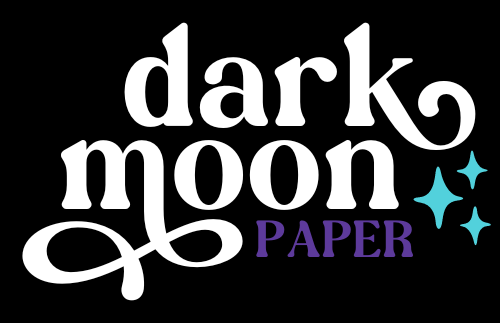
Why use planner stickers?
Planner stickers make organizing easy, fun, and personal! Add color, creativity, and structure to every page, transforming your planner into a tool that reflects you. Perfect for tracking, decorating, and staying inspired daily!
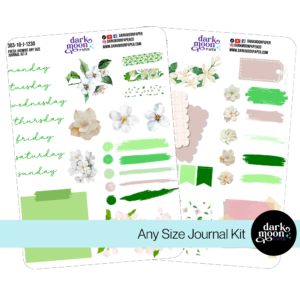
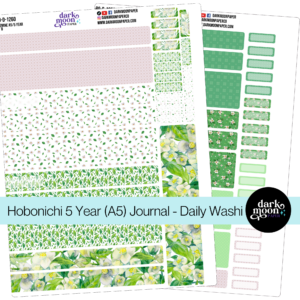
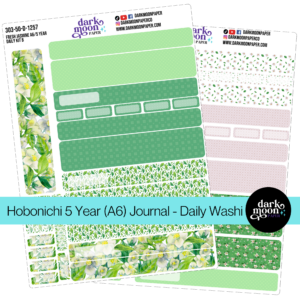
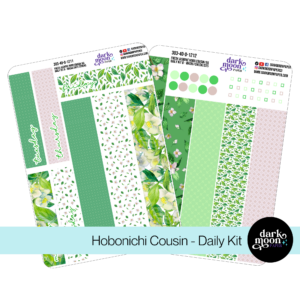
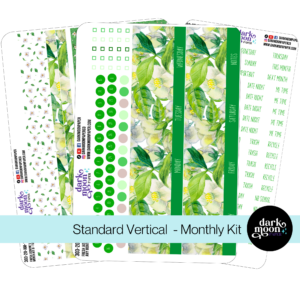
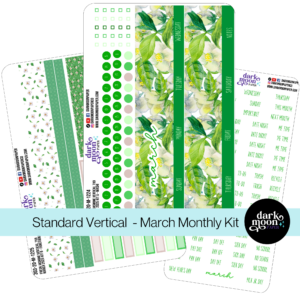
Hello and welcome!
I’m Rachael Snow, a lifelong artist and entrepreneur, and I started Dark Moon Paper to blend my love of art, technology, and the mysterious beauty of the world around us. My sticker kits are meant to set the mood, tell a story, and give you a little escape from the ordinary.
I work from my cozy studio tucked away in the beautiful woods of Oregon, surrounded by nature and a dark night sky full of stars.